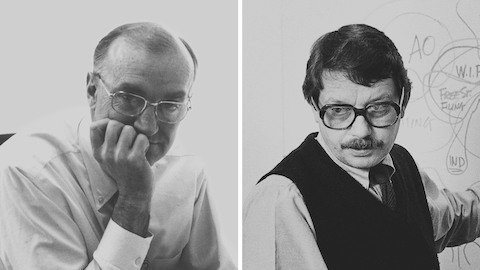The office as facility based on change
Once a graphic artist and sculptor, Robert Propst became president of Herman Miller Research Corporation in 1960. His goal was to investigate how the world of work operated, and he concluded, sadly, that “today’s office is a wasteland. It saps vitality, blocks talent, frustrates accomplishment. It is the daily scene of unfulfilled intentions and failed effort.” In his landmark book The Office: A Facility Based on Change, he wrote, “We find ourselves now with office forms created for a way of life substantially dead and gone.”

Propst’s answer to this unhappy situation was the Action Office system, introduced by Herman Miller in 1968. It was the world’s first open-plan office system—a bold departure from the fixed assumptions of what office furniture should be. With Action Office, Propst created a workspace solution that fit the way people really worked. Action Office was designed as a set of components that could be combined and recombined to become whatever an office needed to be over time. Designer Jack Kelley, designer of the mouse pad, worked side by side with Propst throughout the 1960s and early 1970s and played a pivotal role in the design of many Action Office components.

“You have to understand computers—and the people who depend on them—to design for today’s offices.”
More about Robert Propst and Jack Kelley
